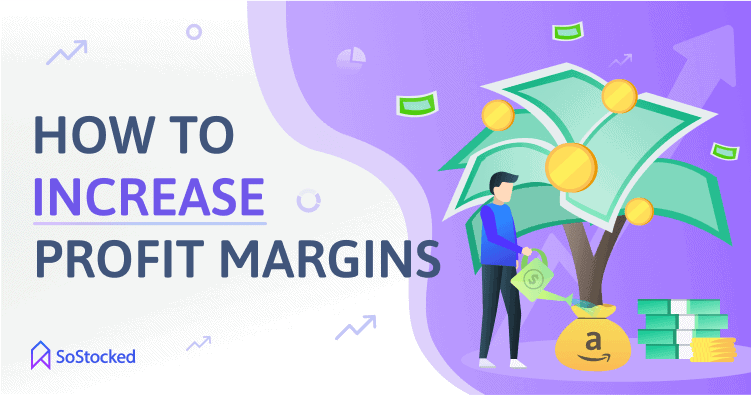
How to Increase Profit Margins For Amazon Sellers
Kill Your Amazon Profit Killers
Is your Amazon business a sieve, leaking profits? Do you want to know the top reasons you’re not KEEPING as much money as you’d like?
Well, let’s talk about the different ways you might be losing profit in your business and how to recover it.
Many people don’t know that I spent four years as an account executive in a financial management firm. While there, I managed finances for clients in the arts & entertainment fields and even the software industry. I became skilled at managing numbers and analyzing how to cut spending to maximize profits.
Based on that experience, I want to share a couple of eye-opening tips that I’ve learned along the way, including how to save money and how to discover what is killing your Amazon profit.
How do you know what is happening to your profit? We typically analyze profit on a product when we first start selling it, and then years go by, and it usually takes a long time to realize when the product gradually becomes unprofitable. You might think you have to kill a product, but maybe you just have to tweak how you’re handling things. The first thing is to ask yourself these questions:
- Am I profitable?
- If not, why not?
- Can I improve profit margins?
The answer is almost always yes; you can be more profitable. Let’s talk about how.
In this How to Increase Profit Margins guide, we’ll take a look at:
Quick Wins To Increase Profit Margins
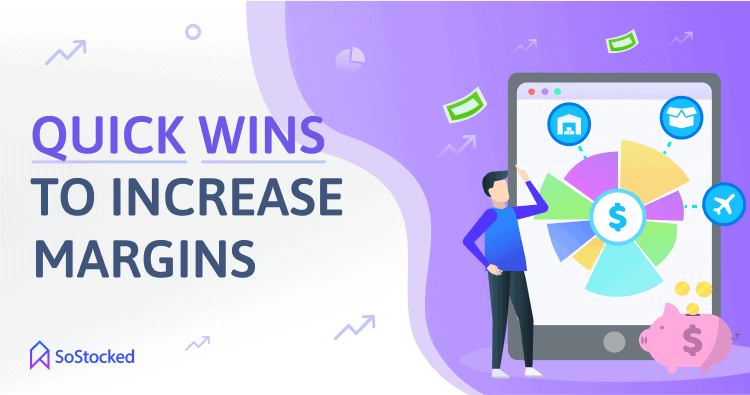
You want to begin by doing a complete analysis of your expenses and looking at your last four months of spending. Take a thorough look at your bank and credit card statements, determine where every dollar has been going, and take an average of your spending. You probably have monthly recurring fees and expenses that you can easily attribute, and then you have things like office and travel expenses that are not necessarily regular expenses.
You can figure out your monthly average based on that analysis, but remember that you also have annual expenses. If you don’t factor in your yearly costs, you will have an inaccurate idea of how much money you need to bring in monthly.
To determine your annual average, identify your yearly costs, divide them by 12 (for the 12 months of the year), and then you’ll have your monthly cost for your annual expenses. Make sure you’re specifically looking at things like your cost of goods as well. Fees often creep up in your cost of goods, including within your warehousing fees. If you aren’t occasionally auditing your warehousing fees, you might be surprised at what you’re being charged due to the various ways warehousing expenses can be calculated.
There are a lot of little, seemingly tiny fees in warehousing that all add up rather quickly. For example, you might be paying for:
- Pallet storage
- Pallet check-in
- Pallet prepping
- Carton prep
- Labor charges
Pay attention to the shipping fees, merchant fees, and Amazon fees also! Many of these are affecting your profit margins, and you should adjust them whenever possible to regain some margin.
The other thing to look at is your PPC ad spend. Is your ad spend starting to creep up? Is it helping your sales, or is the ACoS getting a bit too high? You might want to include this in your audit and rein that back in.
Once you’ve done a full workover and understand your overhead costs, hard cost, and cost of goods, you’ll want to do two things to get that spending refined. The first is to go for the quick win.
- What are those things that you can cancel immediately?
- What are those things you can take action on immediately without a lot of time and investment?
- Is there a service that you’re not using any longer? Cancel it.
- Is there a function that you don’t need anymore? Get rid of that and any expenses tied to it.
Secondly, identify what will make the most impact on your bottom line and make that thing your project over the next month or quarter. Then identify the next thing, and slowly but surely over the next year, handle those things so that you streamline your efficiency. For example, maybe you focus on managing your PPC ad spend because it just keeps racking up the expenses without the subsequent sales reward. Or maybe your warehouse is charging you too much, and you need to change the way that you’re packaging things or change your warehouse altogether.
Pro Tip: Use Amazon Seller Dashboards for quick inventory insights to trim the fat, such as identifying slow sellers.
Streamline Inventory to Increase Profit Margins
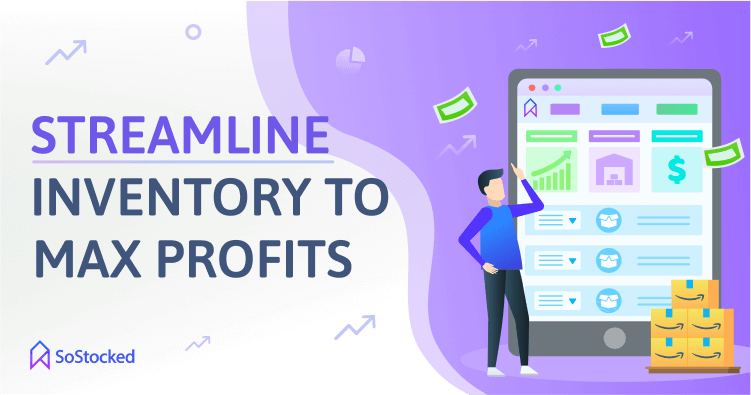
There are a couple of ways that you can be losing money in your inventory.
If you’re overstocked on inventory, it costs you every single month. And if that’s costing you every month, you are making less money on that same inventory every month that it continues to sit there.
For instance, let’s say you have an order that lasts you four months. Every single month you’re going to be making less money on that inventory. It might make sense to ship smaller orders more frequently. You might want to consider running the numbers on the cost of storage versus the cost of shipping those smaller, more frequent orders.
And then there’s stocking out. Now, there are the obvious stockout costs, but there are also the less obvious ones that no one really talks about. Obviously, stocking out tends to cost you through lost sales, re-ranking costs, and, at times, expensive air shipments.
For example, we have a SoStocked user who was paying $1.20 per unit for air shipping. When she started using SoStocked and got better organized with the inventory side of her business, that expense went from $1.20 approximately $0.50 per unit. That’s huge! Especially if you’re doing many thousands of units a month, like the SoStocked user I mentioned, saving upwards of $150,000 a year. If you find yourself air shipping frequently, ask yourself questions like:
- What products am I often airshipping?
- Why did I have to airship?
- How can I prevent that in the future?
There is a balance between keeping inventory in stock, paying storage fees, and having to airship. Which one is more expensive? Usually air shipping, but that’s not always the case. You have to run the numbers to figure it out for your own business and circumstances.
Then there are the less obvious stockout costs I hinted at earlier. For example, marketing can be expensive. And I’m not just talking about your average ad spend. Many sellers don’t think about any costs they may have expended to market themselves into a stockout. If you had a Lightning Deal a month ago or an aggressive PPC campaign, or worse, you paid a PPC agency and that agency stocked you out…then that’s even more lost profit because you paid to run yourself into a stockout. There’s a lot more cost involved in stocking out because you’re making less profit on every unit you sell on your way into that stockout. If you’re marketing that inventory, contracted with an agency, paying for PPC ads, Lightning Deals, and discount coupons, then none of those are truly full-price sales, are they?
Suppose you had used full-price sales and hadn’t pushed the marketing that hard; you might have stayed in stock. Suddenly, you start realizing how much money is being wasted on stockouts because the marketing and inventory aren’t coordinated; this is one of the biggest reasons people run out of stock. And that’s one of the reasons why we continue to talk about inventory-minded marketing. In general, stocking out usually happens because sellers market too aggressively without vetting and truly coordinating their inventory plans with their marketing plans. Taking the time to make these analyses is vital to the health of your business.
Pro Tip: Use the Inventory Timeline feature in SoStocked’s Amazon Inventory Management Software to forecast future marketing events to sync up marketing and inventory and avoid marketing yourself into a stockout.
Perks To Optimize Profit Margins (How We Saved Big with Fee Credits)
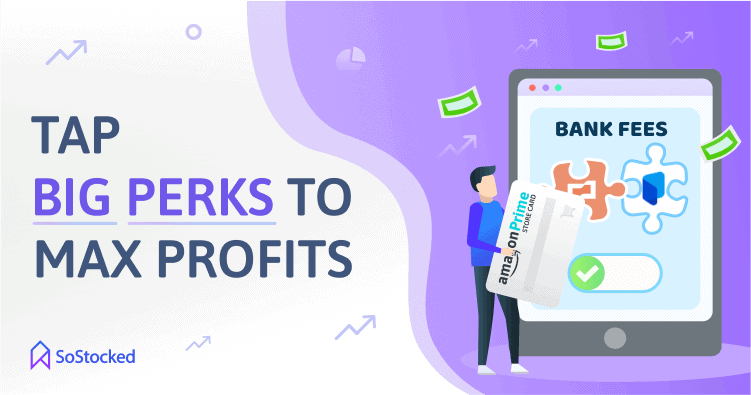
The next thing you want to take a look at is your banking and merchant fees. One of the things that bother me the most is paying wire fees — It seems like a necessary evil, but it doesn’t have to be! One of the things we found when starting up SoStocked is a bank that offers free, no-fee wire transfers, including international wires!
I didn’t think free wire transfers existed, but they do! Brex, the online bank that offers these free wires, is geared towards entrepreneurs. Brex partners with another company called Passport for big perks; you have to sign up for Passport first, and then you can sign up for a Brex account via Passport and finally officially sign up to get your “Passport”, which is essentially just discounted access to perks for business owners. This annual Passport is $500, so be sure to sign up using your new Brex account as that $500 will be re-credited and thus essentially FREE when you sign up through Brex.
Keep in mind, Brex works partially as a money market and partially in cash. You have to make sure that this is the right move for you because it’s a little riskier. You may consider just holding a portion of your money in there, rather than all of your money; it’s up to you. Or perhaps a cash-only option becomes available. Speaking to a Brex representative could help you to learn more about the flexibility of the account.
As mentioned, using Brex & Passport comes with a lot of perks. One of the perks that I love best is for Stripe. If you’re selling on Shopify and using Stripe integration, the perk allows you to sign up to receive no fees on $20,000 worth of sales! That can be huge, right? That’s a good amount of savings. We’re talking several months’ worth of sales, or even a year’s worth of sales, depending on how much of your business is actually on Shopify.
Other notable Passport perks include:
- $2000 in Airtable credits
- Free enterprise-level Zoom account
- Three months free on Xero
- Quickbooks, CRMs, 99 designs, and business management software have perks as well
There are always ways to find new banking and merchant service perks and rewards. I highly recommend using a rewards card also so that you can cut your travel expenses down of course. For example, Chase Bank has had some excellent rewards cards.
Recode Shipping Fees To Increase Profit Margins
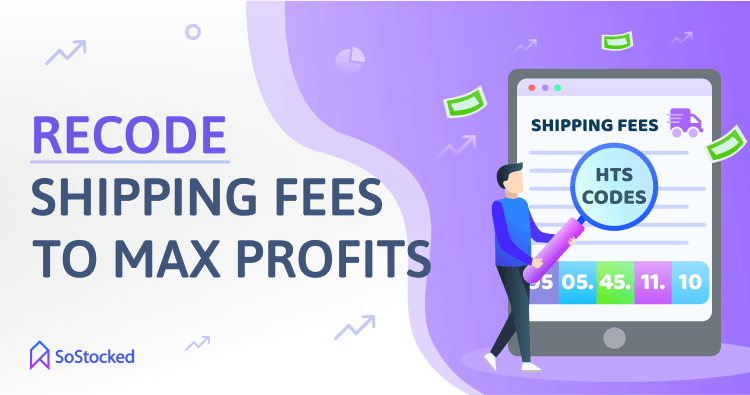
Next, I want to share some of the things that we have done to cut our Amazon expenses when it comes to shipping fees.
Start by investigating your HTS codes. HTS codes decide how much you will be charged in duties for each product in your business. You can save a ton of money on your duties if you take a good look at how you’re being coded. For example, back in 2019, when the Trump tariffs came in and raised our costs, we went from 0% duties in our business to 25% duties over six months. We struggled with this new change, and it affected our bottom line significantly.
We asked our supply chain manager at that time to help us out, and she said, “There’s nothing I can do.” We just accepted that answer until we met a product sourcing expert named Afolabi Oyerokun of Honu Worldwide.
Afolabi has been in the import/export business and the sourcing business for over 20 years and has a service that investigates HTS codes. Once we used his service, he was able to get us from 25% duties down to 10% on all but one of the products sent to him to reclass.
Savings like that can make a big difference in your business. At least once a year, take a look at the invoices you’re getting from your freight forwarders, calculate the duties on your products and see if something can be done to lower them, legally of course. All these fees can creep up over time without you noticing.
Get Back Money Your Owed To Increase Profit Margins
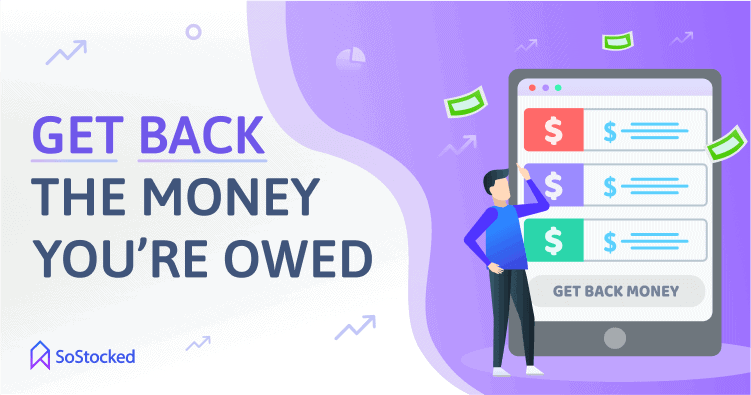
And then there are Amazon fees. Many of us use reimbursement software for Amazon fees. I recommend Getida. Keep in mind that not all reimbursement software is approved by Amazon. In fact, I think Getida is one of the only tools in this category that is authorized to list on the Amazon App Store.
Amazon could ding your account if you are abusive to their reimbursement system in some way. Thus, importantly, you need to know how the software you’re using is going about the process of reimbursement requests and whether it is within Amazon terms because, in the past, they have blasted a bunch of other services and software for violating their terms. If this happens to you, it could reflect poorly on your account.
In addition to this, Amazon will sometimes try not to repay the monies you are rightfully owed. You might just accept this, but it’s not always right. If Amazon owes you money, Amazon owes you money. If they “decide” not to pay, it doesn’t mean it’s a closed case.
This is why I like to work with an organization that knows all of the ins and outs of Amazon, like Getida. They are not an Amazon software suite that happens to have reimbursement management as one of their many tools. Their primary focus is recovery. They understand what they can push back on and how to get things approved that may have been disapproved in the past.
If you have had problems in the past with getting your reimbursement requests rejected, you need a service that understands the process in detail. The sooner the better too as there is always a window of time to get that money back and after that window closes, you’re out of luck.
Top Tips To Increase Profit Margins
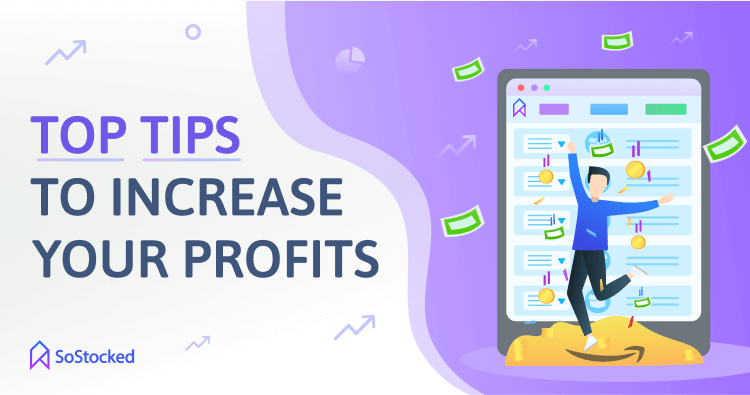
I want to reiterate that it is a core mission of mine to help you to keep more of your money. There are many experts out there that are good at helping you make more sales and more money, but I’m interested in helping you keep the money you’re already making, streamlining to improve efficiency and profitability. When you keep more money, you have more money to scale. When you have more money to scale, you can grow your business faster and move toward an excellent exit, if that’s on your future road map.
Here’s a quick summary of what we covered:
- There’s almost always a way to become more profitable
- Run the numbers on smaller more frequent shipments to avoid overstocking
- Reduce your shipping fees by legally re-coding your HTS codes (with professional guidance)
- Make sure your warehouse isn’t overcharging with hidden fees
- Save on Amazon fees by using a reimbursement software/service
- Consider using Brex and Passport to get some big perks, like saving on Stripe fees
- Use Amazon Seller Dashboards in SoStocked.com for quick inventory insights to trim the fat, such as identifying slow sellers.
- Use the Inventory Timeline in SoStocked.com to sync up marketing and inventory to avoid marketing yourself into a stockout.
Need more information?
- Send Message: We typically reply within 2 hours during office hours.
- Schedule Demo: Dive deeper into the nuances of our software with Chelsea.
- Join Live Upcoming Webinar: New to Amazon inventory management? Learn three inventory techniques you can implement right away.
 Get Started
Get Started